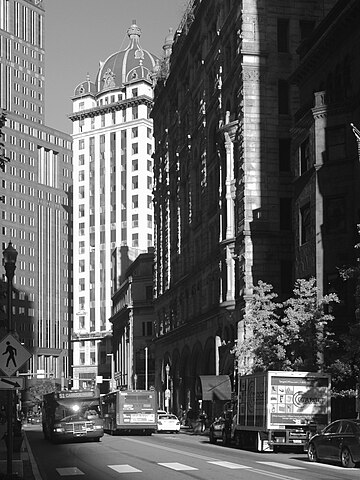
This splendid building, faced with ornate reliefs in terra cotta, is one of those odd-shaped buildings created by the colliding grids of the 1785 street plan for the Triangle. The iron-and-glass awning is particularly artistic, bringing a touch of Art Nouveau to the streetscape.











